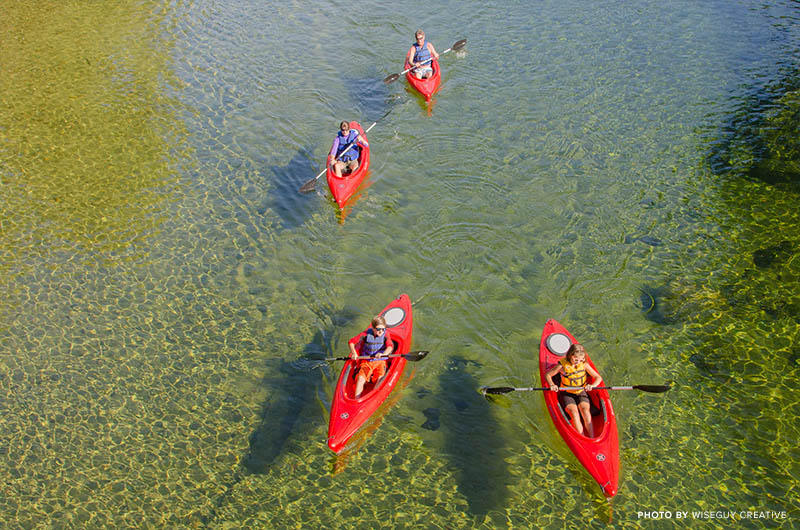Kayaking Tips for First-Timers from New Hampshire Kayaking Expert Peter Gagne
When it comes to taking your first kayaking trip down the incredibly diverse waterways of New Hampshire, there’s more to it than “keep paddling and don’t tip over.” Thus, it’s important to get your feet wet (figuratively) with some advice from a kayaking veteran. Kayaking is the perfect blend of serenity and exercise, but these tips from Peter Gagne of Saco River Canoe Company will make sure you not only have fun, but stay safe as well.
Gagne has been kayaking for 24 years and has owned his New Hampshire-based business for a decade. “The Saco River is one of the most popular waterways to kayak in New England. It’s crystal clear, meandering water that reaches about 3-feet deep. It’s very easy and as long as the water levels are not too high, most people have no trouble at all” says Gagne. “You have Mount Washington in the background and it’s sandy, sandy, sandy shores all the way down. The Saco goes from Bartlett, New Hampshire to Maine, and there’s a good chance you’ll see bald eagles and some deer. There are wildflowers and breathtaking mountain views. It’s the perfect place to learn how to kayak.”
The Basics
You can rent everything you need for your kayaking adventure along rivers, lakes and seaside throughout New Hampshire. There are double kayaks if you want to head out on the water with a partner, and singles if you’d prefer to keep full control of where you paddle and how fast.
You’ll also need a life jacket to get started. Sure, those bulky life-saving devices are a bit cumbersome and may not match your outfit, but because waterways across the state can get deep, fast and rocky in spots, they’re really a safety no-brainer.
Another important tip? “If you fall off, stand up,” says Gagne. Finding your footing always comes first.
What to Bring (and What Not to Bring):
Though you’re bound to see some majestic scenery and wildlife along the way, it’s probably best not to bring your top notch camera and expensive zoom lens along with you. “I tell everyone to bring what they don’t mind getting wet” says Gagne. “If you have a $700 iPhone, unless you have a drybag, I don’t know why you need it in the river.”
Besides, who would you want calling you while you’re enjoying New Hampshire’s serene waters? The whole point is to leave your daily grind in the car. “Text and Facebook when you get off the river—then you can tell everyone how great your trip was,” he suggests.

What to Wear
You’re not going to want to wear that new party dress or designer shoes on the open waters. Start with sunscreen, and don a bathing suit and comfortable, quick drying clothes. Having sturdy sandals, old sneakers, water shoes or boat shoes on hand should all do the trick to protect your feet rocky during rocky put-ins and take-outs, advises Gagne.
Fueling Up
The beautiful state of New Hampshire is 84 percent forest and wildlife, so there won’t exactly be a Dunkin’ Donuts along the river, Gagne points out. He recommends bringing plenty of water and food for the trip. “I would bring lunch or a snack and stop at one of the many beaches and picnic, and after enjoy some of our nice swimming holes,” he says.
Plan Ahead
It’s New England, and nothing is more unpredictable than the weather. It affects the water’s depth and current, so it’s best to contact the nearest kayak rental company or state park before launching your kayak. He notes that while the Saco River waters remain pretty shallow in the summer, other waterways may not be, and any body of water can rise quickly as a result of heavy rainfall or melting snow.
Know Where You’re Going
Because of the variable currents of New Hampshire’s diverse waterways, it’s often not possible to just turn around and head back from where you started—as Gagne points out, rivers aren’t a ride at Disney World! But not to worry. Most kayaking rental places in New Hampshire will provide a pick up service, whether you’re renting from them or have your own.
Stay Awhile
For an ultimate New Hampshire kayaking experience, Gagne recommends a camping overnight. Because it’s not possible to bring a lot in a kayak, he says most people set up at a nearby campground and then enjoy kayaking day trips.